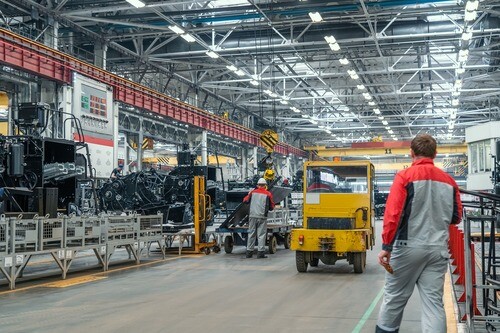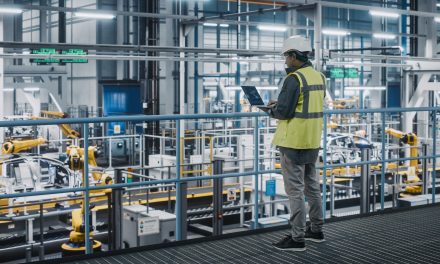The tire sector is set for a decade of enormous change. As such, executives in the sector face a range of pressures, both operationally and commercially, that they can only address through digital transformation.
Digital technology is an enabler. Digitalization is necessary for tire producers to achieve their business objectives and remain competitive amid industry-wide cost challenges and demands to improve the sustainability of operations. By integrating manufacturing and business processes, tire companies can move towards more integrated, autonomous ecosystems, developing plants that run independently and transforming product quality, cost, and business agility.
The Transformation from Automation to Autonomy
To realize the multi-year vision of autonomous production, tire companies today need to focus on the fundamentals that will feed their ambitions. These include the adoption of automated machine processes and clean data, combining to enable rapid and accurate decision-making on the plant floor.
As part of a study we conducted at Kalypso, models from Gartner’s Hype Cycle for Supply Chain Strategy were applied to the tire sector. Gartner forecasts a major transition over the course of this decade, progressing from the manual phase – the current state in many of today’s manufacturing plants – towards three development stages of Automation, Augmentation and then Autonomy by the 2030s. These phases each involve a succession of technology adoption to enable new capabilities that lead towards the autonomous plant – the end goal being a self-governing, self-directed network of facilities run on AI.
For tire executives, the focus is currently on embracing cloud computing and integrating previously disconnected systems, such as PLM and ERP, as part of a digital thread. Building on this digitalized foundation, tire manufacturers will be better positioned to integrate developments in Robotic Process Automation (RPA), Internet of Things (IoT), Machine Learning (ML) and Digital Twin to transform the tire manufacturing value chain.
The process enhancements involved across this transformation will include:
- Process optimization with ML control – using data modelling and analysis to improve material inputs, control systems, runtime parameters and timing.
- Predictive maintenance and condition monitoring – using IoT to implement feedback loops that enable corrective or preventative actions.
- Energy management – supporting enhanced energy efficiency through optimized machine run and scheduling and integrated production schedule planning.
- Smart production scheduling – using smart manufacturing capabilities to enable improved scheduling and allocation of workforce, materials, tooling, inventory levels and rates of production.
Together, these developments will help converge IT with OT across the plant, improving the quality and utility of machine data to enable the smart, autonomous enterprise.
The Benefits of Autonomous Tire Production
This process of digital adoption is attractive to executives. In the tire sector it addresses many of the challenges and pressures being faced today while giving greater protection to future business value and market position. Of the many benefits presented by digitalization, executives can expect to see connected plant operations offer:
- Improved product quality
Advances in robotics and sensor technologies enable greater precision and consistency in production. This results in lower variance between products, offering improved predictability and reduced risk of waste.
- Increased production throughput
Improvements in machine efficiency and run time enable the production of a greater number of units within any given timeframe, without sacrificing quality.
- Increased equipment run time
By enhancing machine reliability, manufacturers can reduce downtime and introduce predictive maintenance to limit future risks.
- Decreased production costs
A greater level of standardization with a more efficient use of materials per unit costs.
- Reduced energy use
Operators gain greater visibility over energy usage through analytic capabilities, with measures in place to reduce waste and better allocate resources.
- Improved innovation
Developments in software such as Digital Twins can be applied for more accurate decision-making, creating a thread from R&D through to production to increase the manufacturer’s ability to experiment and test without disrupting existing processes.
- Faster time to market
More connected production from end to end, with greater predictability over outputs and lead times.
The iterative and continual advances that executives can see from these benefits, not only yield long-term improvements, but impact the bottom line in the near term.
Working with executives in the sector, we’ve already seen businesses achieve a 20% increase in overall equipment effectiveness (OEE) and a 2-5X EBITDA multiple improvement from investing in digital manufacturing technologies. As we move further into an uncertain macroeconomic environment, the cost improvements become extremely attractive.
Getting Started on the Road to Autonomy
To be positioned for the changes that will take place over the coming years, it’s important that executives get their digitalization initiatives off the ground and producing value as quickly as possible. To do this we recommend focusing efforts on areas of their production that are already automated, and so are well equipped for autonomy.
This involves planning ahead and mapping out their innovation journey, using ‘MVP to scale’ approach that takes into consideration a clearly defined business case. At Kalypso, for instance, we take our customers through this approach:
- Map smart manufacturing journey. Approach the transformation process as a multi-year journey with milestones to mark progress.
- Launch smart MVP program. Refine the vision for future plant operations, supported by data models, base use cases, site architecture, measurement, and stakeholder engagement
- Develop digital capabilities. Introduce technologies fitted to well-articulated business needs and desired outcomes
- Scale smart factories. Horizontally scale use cases, underpinned by a strong value hypothesis
- Integrate into Digital Operations Ecosystem. Enable broad business change through a connected enterprise strategy.
This approach provides an economically viable way to scale, with lower risk as the business is able address issues such as stakeholder engagement and change management in parallel to bring the business up to speed. By showing value in the early stages, it becomes easier to get buy-in across the organization and take strides towards the vision of full autonomy.
You can find out more about the digital technologies that support tire production optimization, here.





